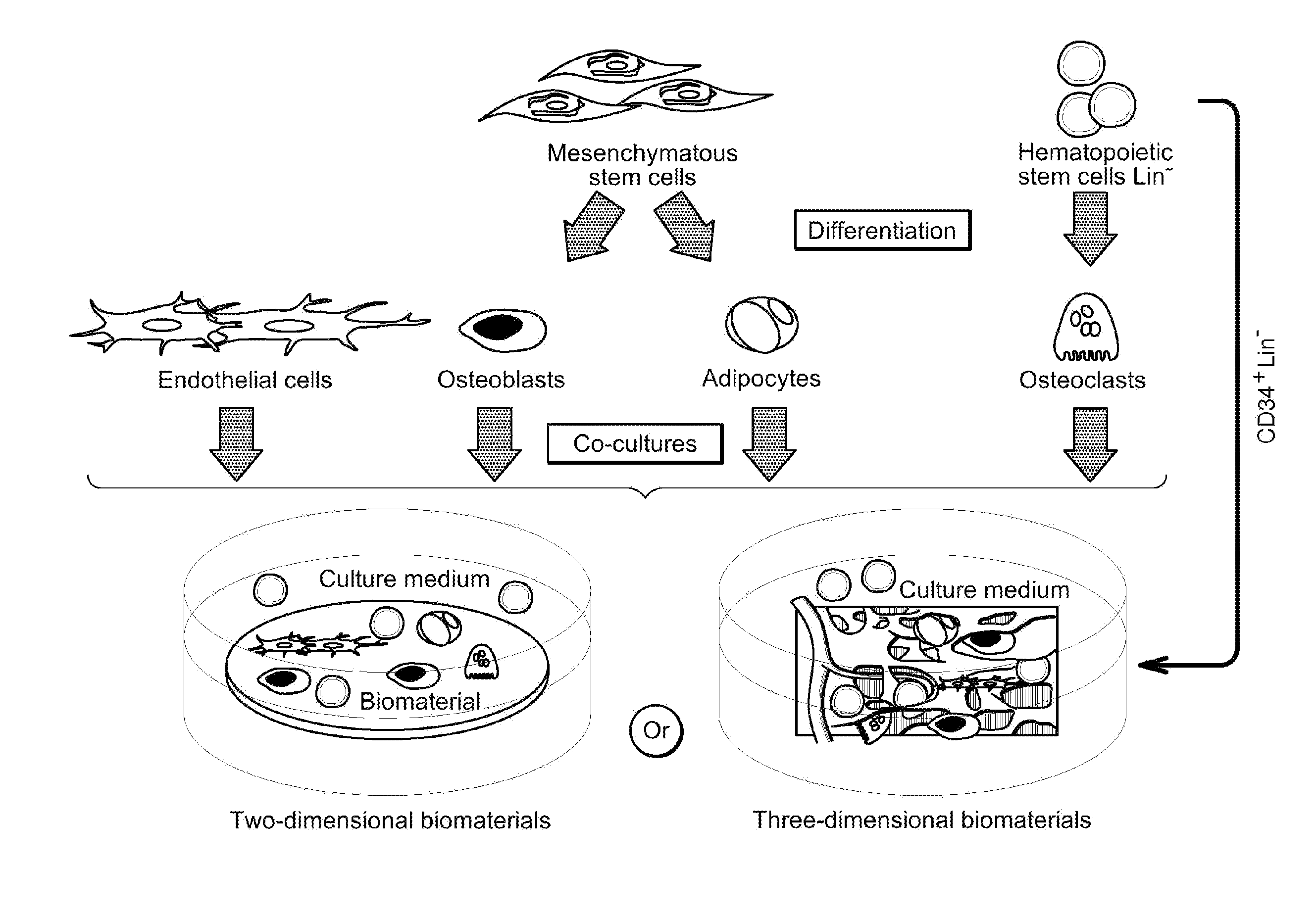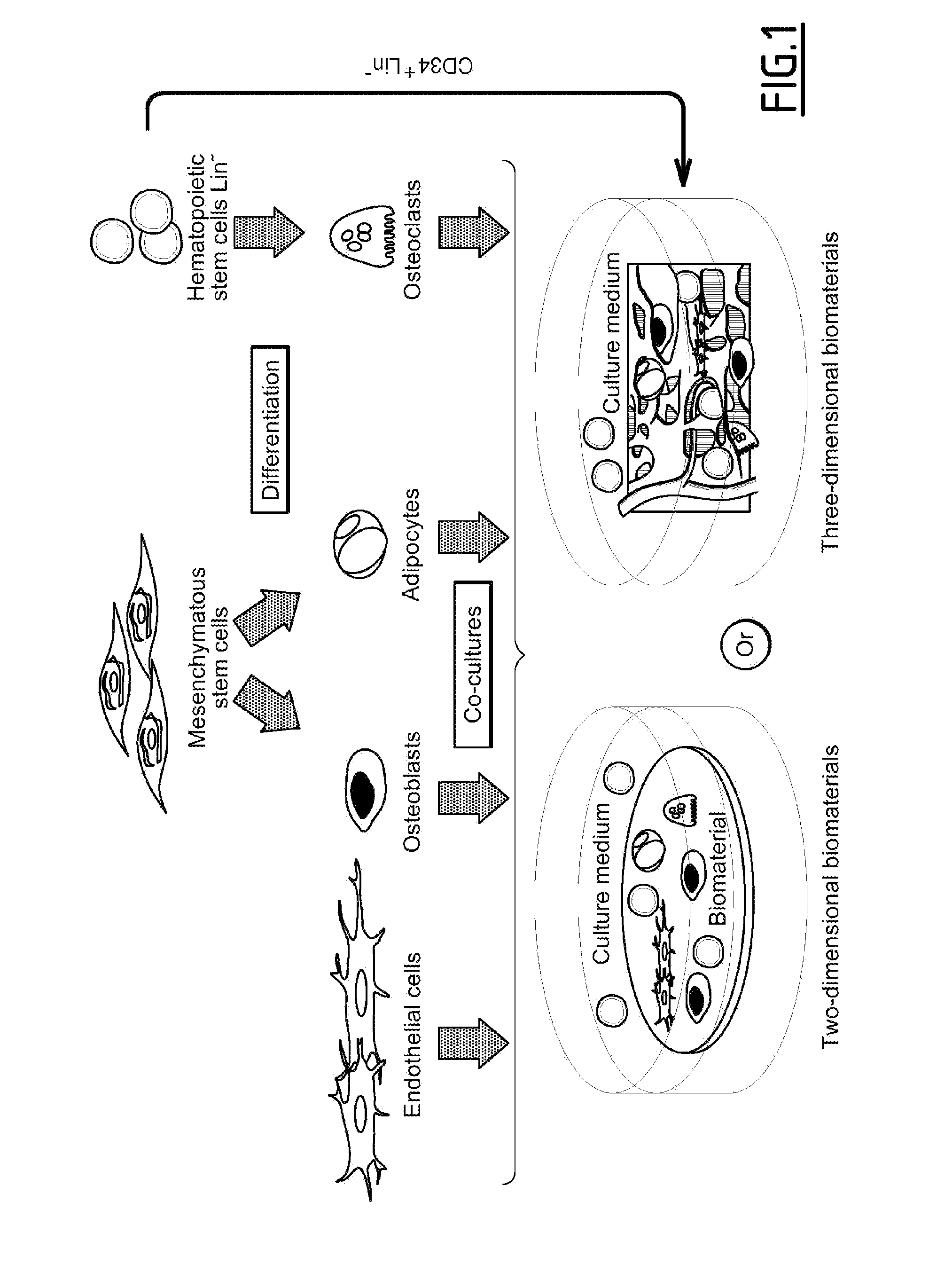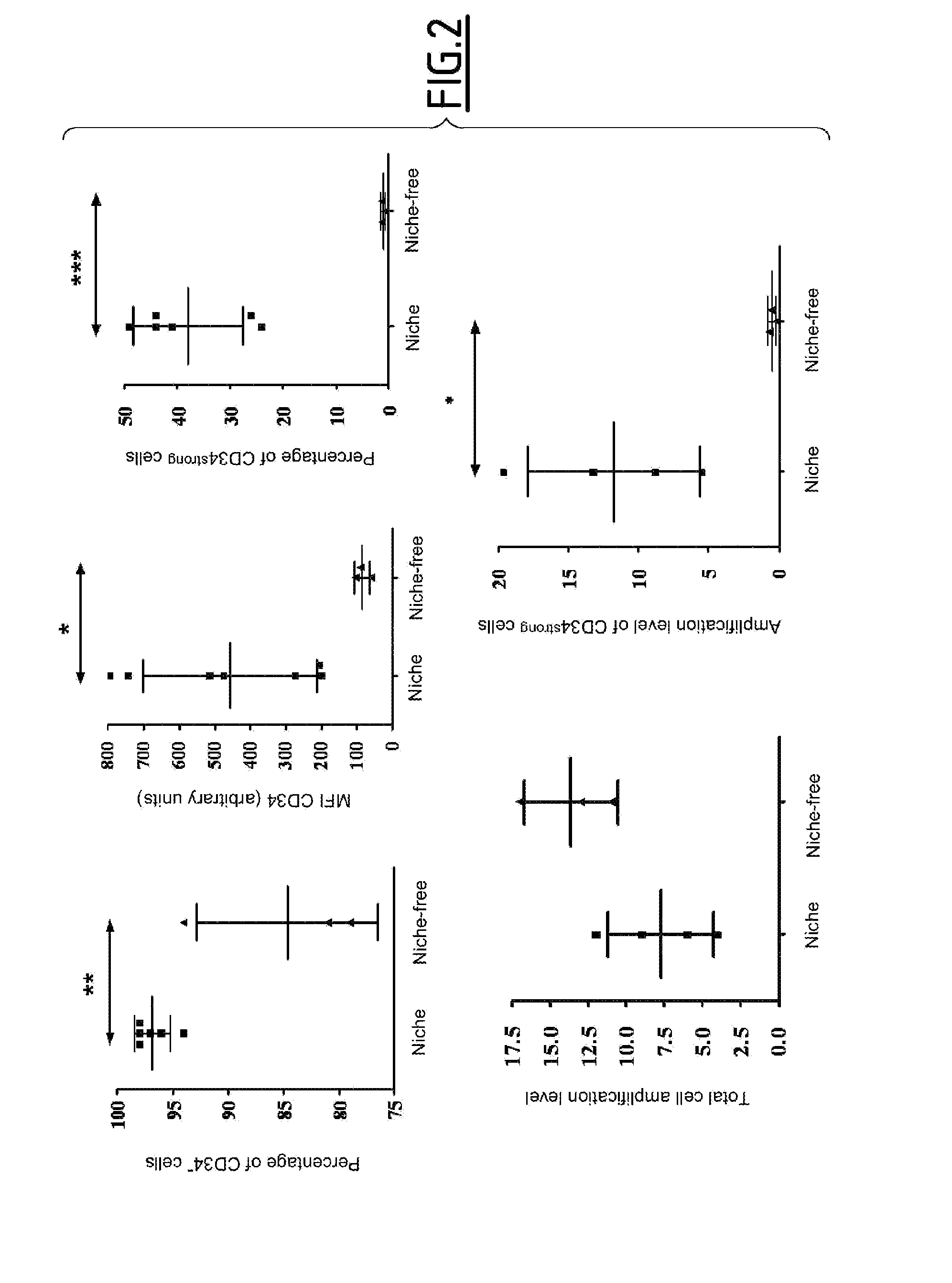In vitro modelling of haematopoietic stem cell medullary nests: a tool for studying the regulation of haematopoiesis, evaluating the nesting potential of a haematopoietic graft and testing the pharmacotoxicology of medicaments
a technology of stem cell nests and haematopoietic cells, applied in the field of in vitro modelling of haematopoietic stem cell nests, can solve the problems of malignant hemopathies, inability to definitively establish whether both of these niches are distinct, and limited understanding of these mechanisms. achieve the effect of pharmacological and therapeutic levels
- Summary
- Abstract
- Description
- Claims
- Application Information
AI Technical Summary
Benefits of technology
Problems solved by technology
Method used
Image
Examples
example 1
Preparation of Various Cell Types Forming the Niche Isolation and Culture of Mesenchymatous Stem Cells (MSCs)
[0093]Mononuclear cells of bone marrow are isolated from fragments of cancellous bones from operating residues of patients operated for a total hip prosthesis and seeded into 75 cm2 flasks at a concentration of 100,000 cellules / cm2 in a medium based on MEMα (ATGC / biological Industries) containing 10% fetal calf serum (SVF, Hyclone) and 1% ciprofloxacin (Bayer). The culture flasks are incubated at 37° C. in an atmosphere containing 5% of CO2 and 20% of O2. The culture medium is renewed after three days of culture, the first week and then once a week until quasi-confluence (80% to 90%). When the cells have reached confluence, they are detached from the plastic support by enzymatic action of trypsin (trypsin 1: 250, Sigma) during 5 min at 37° C., numbered (trypan blue) and then frozen in a cryoprotective solution containing 5% human albumin and 10% DMSO. With view to their use, ...
example 2
Selection of the Biomaterials
[0109]Modeling the niche requires the sharing of different stromas on a same osteoconductive 2D or 3D support. These biomaterials (BMs) may comprise in particular hydroxyapatite (HA) and of tricalcium phosphate (TCP) in various proportions and have variable porosities. From among the latter, let us mention B2D and B3D (BD Biocoat Osteologic Bone Cell Culture System) and Calciresorb 35 (Ceraver) which is a biphasic ceramic comprising 65% of HA and 35% of βTCP. The results shown in Example 5 were obtained with Calciresorb 35 (Ceraver).
example 3
Selection of the Extracellular Matrix
[0110]Natural glycosaminoglycans (GAG) or their mimetics (which have the advantage of not being degraded by glycanases) may be associated with the biomaterial. The preferentially used mimetic GAGs are marketed by OTR3 (for Organ, Tissue, Regeneration, Repair and Replacement) under the name of RGTAs for > and are ideally used at a concentration from 10 to 50 mg / ml. The results shown in Example 5 were obtained with OTR4131.
PUM
 Login to View More
Login to View More Abstract
Description
Claims
Application Information
 Login to View More
Login to View More - R&D
- Intellectual Property
- Life Sciences
- Materials
- Tech Scout
- Unparalleled Data Quality
- Higher Quality Content
- 60% Fewer Hallucinations
Browse by: Latest US Patents, China's latest patents, Technical Efficacy Thesaurus, Application Domain, Technology Topic, Popular Technical Reports.
© 2025 PatSnap. All rights reserved.Legal|Privacy policy|Modern Slavery Act Transparency Statement|Sitemap|About US| Contact US: help@patsnap.com



